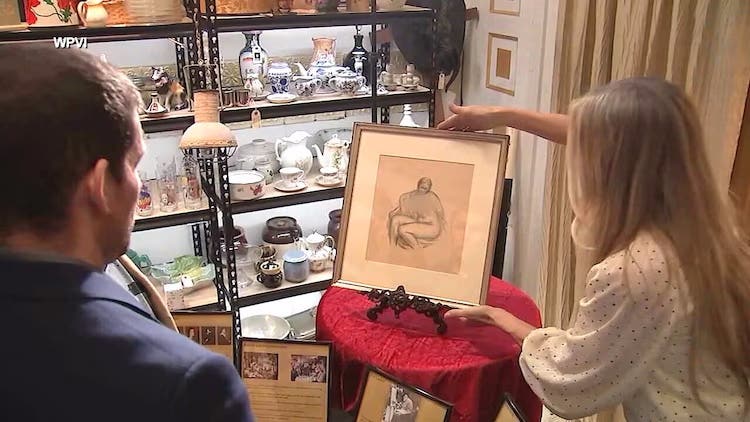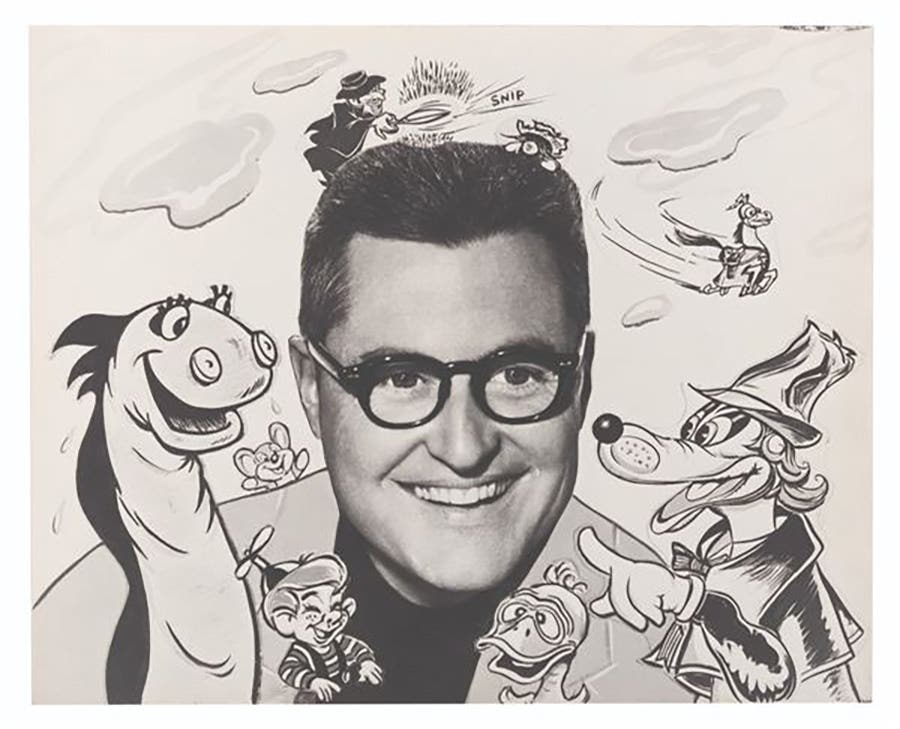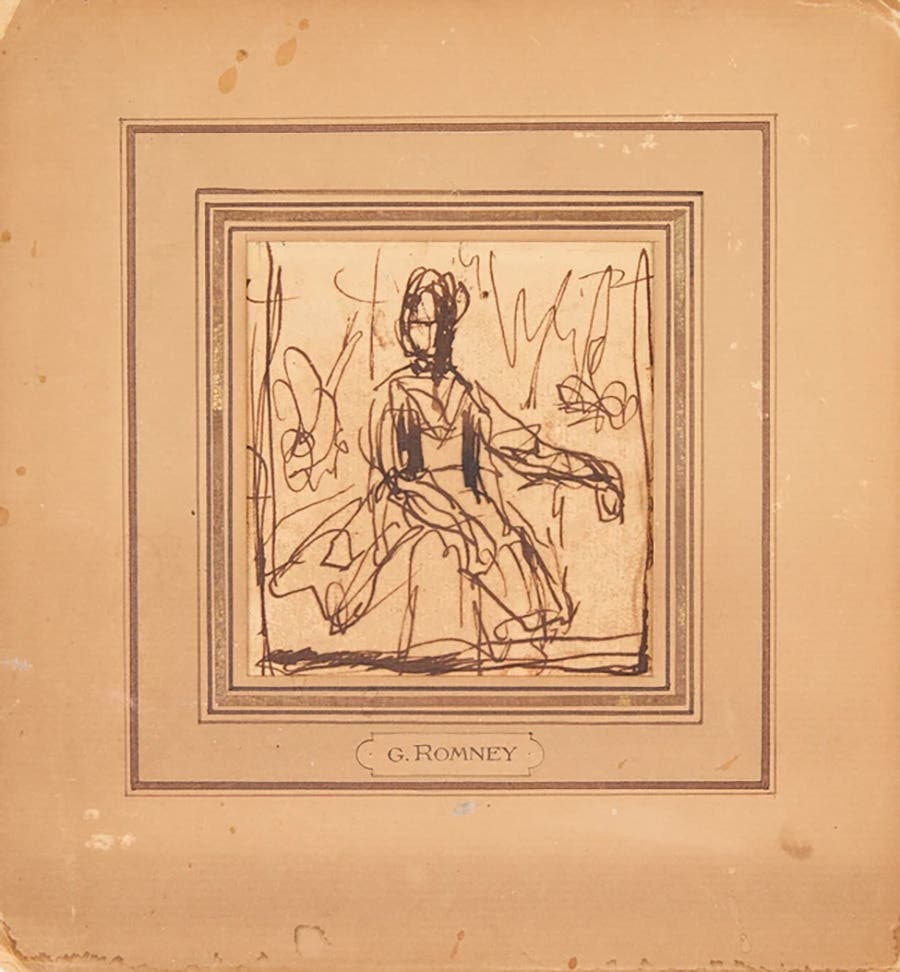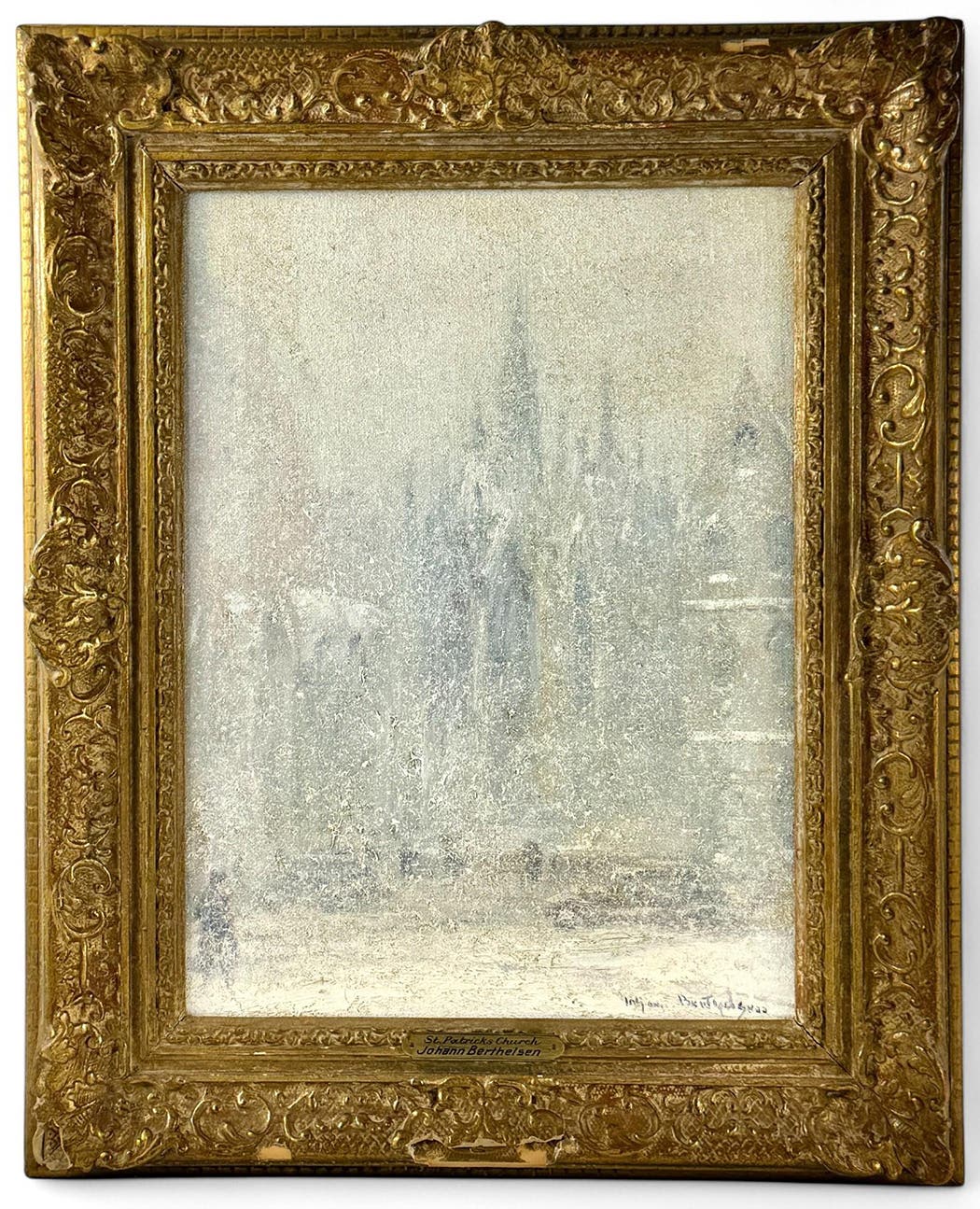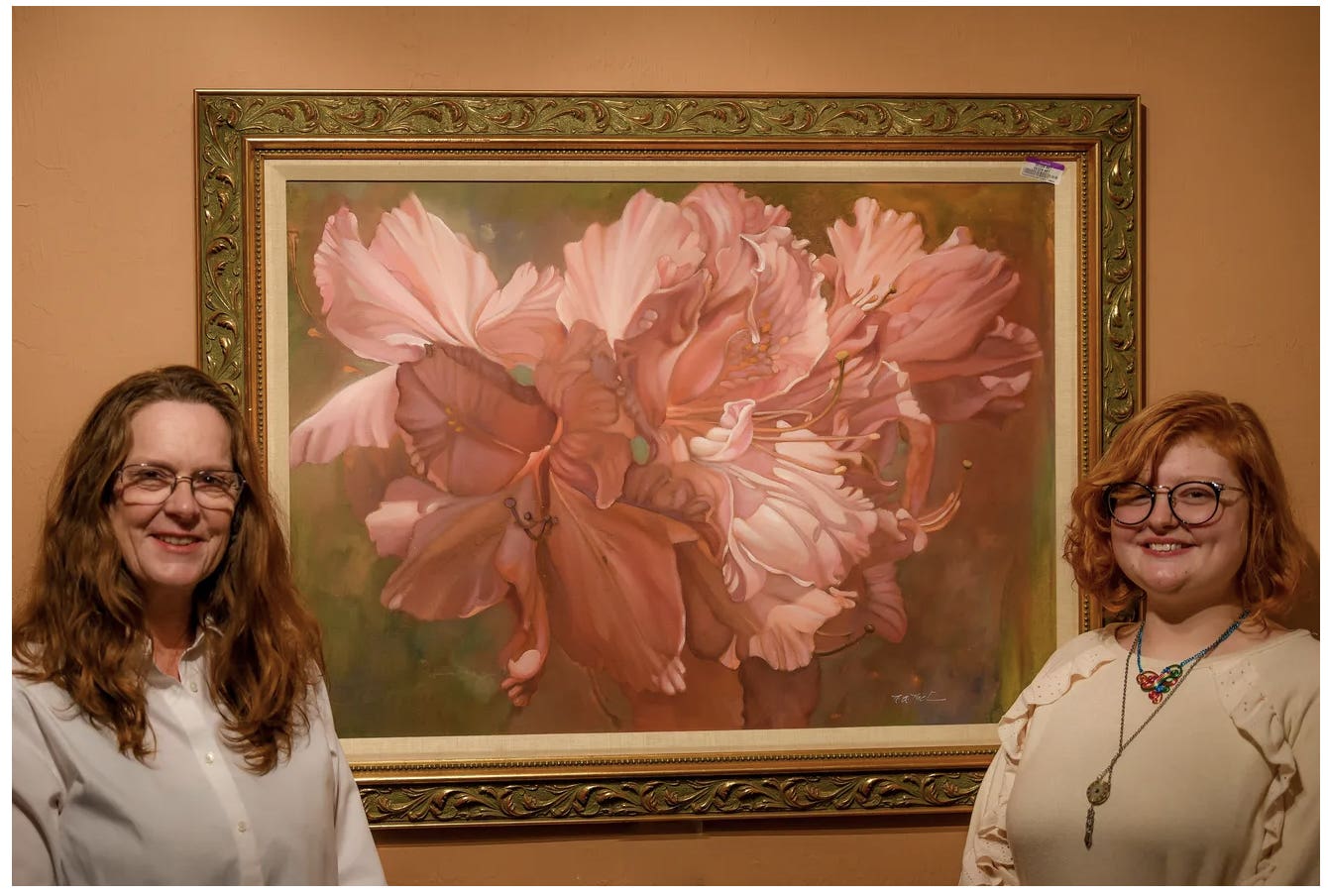Art Markets: Bidders find impressions of New York compelling
Noted 20th century artist Johann Berthelsen captured the essence of city landscapes with subtle use of light and dark, and as Mary Manion points out in her latest Art Markets column, his work resonates with many collectors today.
Johann Berthelsen (1883-1972) was drawn to music and painting with equal force; through much of his life he harmonized those two passions and found time to pursue both. But although Berthelsen toured the United States in the early 20th century as an opera singer and concert vocalist, he is remembered for his paintings, chiefly his wintry impressions of snowfall in New York City.
Berthelsen was born in Copenhagen, Denmark, to a family with cultural interests. His
father sang with the Royal Opera, but his mother sought a divorce and emigrated to the U.S. with her children in 1890. Berthelsen grew up in Manitowoc, Wisconsin, where the Lake Michigan waterfront and the long winters – especially the power of snow to alter landscapes – left an indelible mark on his imagination. As a boy he loved to draw, yet his other love, singing, was his first ticket to success. At age 18 he was accepted on full scholarship to the Chicago Musical College, an academy run by Broadway’s famous Ziegfeld brothers. Berthelsen would enjoy considerable success performing in opera, operetta and Gilbert & Sullivan, but the grueling pace of touring eventually exhausted him. In 1910, he opted for a more settled life by joining the faculty of the Chicago Musical College and in 1913, he moved on to the Indianapolis Conservatory of Music as the head of the voice department. Berthelsen kept a busy schedule producing student performances and appearing as an opera and concert singer. He also began a life-long friendship with Muncie-born Indiana Regionalist painter Wayman Adams, who had studied abroad under William Merritt Chase and Robert Henri. Already known for his portrait paintings, Adams painted a life-sized study of his friend preparing to go on stage. In his lifetime, Adams painted more than 30 notable portraits of Berthelsen and his family.
All the while, Berthelsen made time to paint. Working in watercolor and pastel, he absorbed the varied influences of the Impressionists, including the works of Svend Svendsen, the Norwegian born landscape painter he met in Chicago, known for his play of light on snow. It was Svendsen who admired Berthelsen’s early art work and encouraged him to continue.
Accomplished in many art forms, he appeared on stage in a minor role to observe the great tenor, Enrico Caruso. Years later he recalled the experience, concluding that Caruso was “in every way, everything a singer could possibly be.” During his years in Indiana, Berthelsen hosted an informal arts salon in his home, open to the Indianapolis art community, which included an array of Indiana’s best of the era: Hoosier poet James Whitmore Riley, pastel painter Glenn Cooper Henshaw, author Theodore Dreiser and of course, Wayman Adams and others.
In 1920, Berthelsen and Adams moved to New York, where both realized success. Wayman Adams produced stylized portraits of leading figures of the day, including authors, painters and political leaders. Berthelsen established a private school of singing instruction at the Rodin Studios and attracted a distinguished following, including Broadway tenor Howard Marsh and baritone Robert Halliday. Finding time to paint, he created subdued watercolors and pastels featuring New York scenes. They were exhibited to excellent reviews among national art critics and in 1926, he was elected to membership in the American Watercolor Society. By 1928, Berthelsen, newly wed, enjoyed a growing professional reputation in the New York music and theater communities. With the stock market crash of 1929 and the Great Depression that followed, Berthelsen was forced to
cease his music lessons. Encouraged by an art colleague to paint in oil, the self-taught artist Berthelsen, by now supporting a growing family, began painting in earnest. Similar in technique to his earlier well-received works on paper, he peddled his new metier to the established galleries for as little as one dollar apiece.
During this time Berthelsen’s distinctive style surfaced, with barely there imagery pulling the viewer in for a closer look. New York City was his usually his subject. Whether Fifth Avenue during a snowstorm, Central Park at night or the East River at dusk – the artist’s mastery of light and dark, worked to perfection through the subtle gestures of his brush, produced veils of snow or darkness that covered without eclipsing the scene. Monet’s “Houses of Parliament” comes to mind as one encounters the image rather than seeing it. Painting fast but maintaining a high level of expertise, Berthelsen established a reputation among collectors including William Randolph Hearst and president and CEO of the Hearst Corporation, Richard Berlin, who purchased six Berthelsen paintings. In 1935, he joined the distinguished arts group, the Salmagundi Club, founded in 1871 as a meeting place for artists. He and Wayman Adams, also a member, enjoyed many hours in the company of the club’s important patrons. Also involved with New Deal arts projects in the mid-1930s, Berthelsen was again maintaining a living through his innate artistic skills. In 1942, Berthelsen moved to New Milford, Connecticut, where he created his rural landscape paintings. He returned to New York in 1950, beckoned by the growing demand for his work. Another move, back to Connecticut in the 1960s where he continued to paint. He died in 1972, after succumbing to the injuries of a hit and run accident. A memorial park bench in Central Park is dedicated to his memory.
Berthelsen’s work appears frequently at auction and results are strong. Within the past year, he has been featured at Christie’s, Doyle, Shannon, James D. Julia, New Orleans Auctions and Skinner, Inc. “St. Paul’s Chapel, New York,” a 12-by-16 vertical snow scene on canvas sold for $10,147 (including buyer’s premium) at New Orleans Auction Galleries in July. Another oil, “United Nations, 1953,” returned a sale price of $8,750 at Doyle, New York in May. The 18-by-24 night scene featured the magnificent glass-fronted UN building dominating the skyline as seen from the East River.
The Berthelsen Conservancy (www.berthelsenart.com), established to celebrate the life and promote the works of Johann Berthelsen, estimates the artist’s complete oeuvre between 2,000 and 10,000 works of art. Currently compiling a catalogue raisonne, the Conservancy is accepting requests for authenticating works by Berthelsen.
The Rahr-West Museum (www.rahrwestartmuseum.org) in Manitowoc, Wisconsin, will exhibit “Johann Berthelsen: An American Artist,” in November 2014, featuring the artist’s pastel and watercolor works. It is a fitting salute to the artist’s childhood home, where his interest in the beauty of the winter landscape began.
[relatedPosts]



